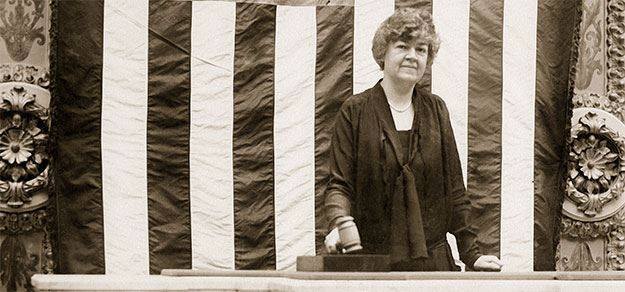
Today in Feminist History is our daily recap of the major milestones and minor advancements that shaped women’s history in the U.S.—from suffrage to Shirley Chisholm and beyond. These posts were written by, and are presented in homage to, our late staff historian and archivist, David Dismore.
Representative Edith Nourse Rogers, Republican of Massachusetts, today drafted new legislation that would give America’s women a chance to serve their country in uniform.

She has been promoting the idea of a Women’s Army Auxiliary Corps for some time, and drafted one bill to create it months before America even entered the war. But her previous bill put a ceiling on the number of women who could enlist at 25,000. In the weeks following the attack on Pearl Harbor, there has been not only renewed interest in her proposal, but a desire to lift the limits on the W.A.A.C., so that its numbers could expand to meet any military needs required during the duration of the present war.
Secretary of War Stimson has said:
“A similar force is being used in England and experience both in this war and during the World War has demonstrated that such an organization will provide a practical means for utilizing the service of women when they can be of great assistance in national defense.”
Though there is presently no shortage of manpower in the U.S., the Secretary believes:
“There are a great many types of duty in corps area service for which women are better fitted than men and the employment of women on such duty would increase efficiency and release men for more intensive work or combat service.”
Those who wish to enlist must be physically and morally fit, between 21 and 45 years of age, and will be paid the same rates as men in the Army. They will wear uniforms, be subject to Army regulations and discipline, live in barracks on Army posts, and do a wide variety of non-combat jobs.
Representative Rogers has been in Congress since June 30, 1925 when she succeeded her late husband in a special election, and became only the sixth woman ever elected to Congress. Her interest in the military and her commitment to veterans go back to the previous war, when she served as a “Gray Lady” volunteer with the Red Cross in France, and then at Walter Reed Army Medical Center in Washington, D.C. She has fought against child labor, promoted “equal pay for equal work” for women and is hopefully now about to add another accomplishment to her career by expanding women’s opportunities to include uniformed service during wartime.





